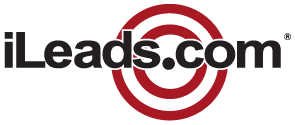Picture this: You’ve just spent thousands of dollars on a brilliant marketing campaign. The leads are finally rolling in. One lands in your system—a prospect with a perfect profile, actively looking for your solution. Your sales rep, finishing up another task, gets to it a few hours later. They dial the number, only to be met with a confused voice on the other end.
“Sorry, who is this again? Oh, right… yeah, I think I filled something out this morning. You know what, I’m busy right now. And actually, I already spoke to someone from [Your Competitor].”
Click.
That sound is the echo of wasted marketing spend and a lost opportunity. This isn’t a failure of sales skill; it’s a failure of speed. In the world of sales, Speed to Lead isn’t just a fancy metric—it’s the single most critical factor in converting an inbound lead. And the clock is ticking faster than you think.
The “Why”: Deconstructing the 5-Minute Rule
For years, sales wisdom has centered on the “5-Minute Rule.” This isn’t just a catchy phrase; it’s a principle backed by extensive research. A landmark study by LeadResponseManagement.org (often cited as the definitive source on the topic) revealed some staggering statistics:
- The odds of contacting a lead if you call within 5 minutes are 100 times higher than if you call after 30 minutes.
- The odds of qualifying that same lead are 21 times higher.
Let that sink in. A delay of just 25 minutes can obliterate your chances of success.
The Psychology of Peak Intent
To understand why speed is so critical, you need to get inside your prospect’s head. When a person fills out a form on your website, they are at peak intent.
At that exact moment, they have a problem that needs solving, a question that needs answering, and your company is top-of-mind. They are actively engaged in finding a solution, and their focus is 100% on the task at hand.
- A call in under 5 minutes is a welcome solution. You are meeting them in their moment of need. The conversation is relevant, expected, and helpful.
- A call in 30 minutes (or more) is an unwelcome interruption. They’ve moved on. They’re making lunch, in a meeting, or browsing a competitor’s website. The context is gone, the urgency has faded, and you are now a nuisance to be dealt with, not a problem-solver.
The Hyper-Competitive Landscape of 2025
In a world of on-demand everything, from Amazon Prime to Uber, customers expect instant gratification. This expectation has completely reshaped the sales landscape. While your team is waiting to call, your competitors are already dialing. The first company to make meaningful contact and provide value has an almost insurmountable advantage. Speed isn’t just a nice-to-have; it’s the new baseline for customer service.
The “How”: Building Your Sub-5-Minute Response Machine
Knowing you need to be fast is easy. Actually doing it requires a deliberate system of technology and process. Here’s how to build one.
Step 1: Instant, Unmissable Notifications
Email is where leads go to die. A notification sitting in a crowded inbox is not urgent. Your system must trigger an alert that is impossible to ignore.
- The Solution: Implement a CRM or lead management system that sends instant SMS/text message notifications directly to the assigned sales representative’s phone the moment a lead arrives. Push notifications via a mobile CRM app also work well. The alert should include the lead’s name, contact info, and source, so the rep can call them back immediately.
Step 2: Automated Lead Routing
If you have more than one sales rep, a lead cannot land in a general “sales@company.com” inbox. That’s a recipe for diffusion of responsibility, where everyone thinks someone else will grab it.
- The Solution: Use your CRM to set up instant and intelligent routing rules.
- Round-Robin: Automatically assigns leads to the next rep in line, ensuring an even distribution.
- “Shark Tank” (or First-to-Claim): Notifies all available reps at once. The first one to click and claim the lead gets it. This method naturally breeds a culture of speed and accountability.
Step 3: Master the First Touch Trifecta
The first attempt to connect should always be a phone call. It’s the most personal and highest-impact channel.
- The Opening Script: Don’t be weird or salesy. Be direct and helpful.
“Hi [Name], this is [Your Name] from iLeads. I just saw your request for information on real-time mortgage leads come through a moment ago and wanted to reach out while it was fresh. Did I catch you at a good time?”
This script instantly explains who you are and why you’re calling, framing your speed as excellent customer service.
- The Trifecta: If they don’t answer the call, don’t just hang up and wait. Immediately execute the trifecta:
- Leave a Voicemail.
- Send a Text Message: “Hi [Name], just left you a voicemail. It’s [Your Name] from iLeads. Let me know when is a good time to connect about your inquiry.”
- Send an Email.
This multi-channel approach maximizes your chances of getting a response.
Overcoming Common Speed Bumps
Implementing a sub-5-minute rule often meets with internal resistance or logistical questions. Here’s how to handle them.
- “But my team is busy on other calls!” An inbound lead from someone who has explicitly asked for information is the highest-priority activity in sales. Period. Your process should allow a rep to politely pause what they’re doing to immediately dial a hot new lead. If your team is constantly too busy to do this, you either need more staff or better automation for lower-priority tasks.
- “What about leads that come in after hours?” You don’t need a 24/7 call center. The key is to manage expectations. Set up an automated email and text response for off-hours leads: “Thank you for your request! Our office is currently closed. One of our specialists will contact you first thing tomorrow morning after 9 AM.” Then, ensure that lead is the absolute first call that rep makes the next day.
- “Isn’t calling that fast… creepy?” It’s all in the positioning. If you’re aggressive or vague, it can be off-putting. But if you’re transparent and helpful (like in the script above), you come across as incredibly responsive and on top of your game. Customers appreciate and are impressed by that level of service.
FAQs
Q: What is the ideal speed to lead time? A: Under 5 minutes is the gold standard. The absolute best-in-class companies aim for under 60 seconds.
Q: Does speed to lead matter for high-value B2B sales? A: Absolutely. While the sales cycle is longer, the principle of peak intent still applies. The first vendor to respond and begin educating the prospect has a massive head start in framing the solution and building a relationship.
Q: How do I measure my team’s speed to lead? A: A modern CRM is essential. It should be able to automatically timestamp when a lead is created and when the first outbound activity (a call, email, etc.) is logged. Running a report on this metric should be a core part of your weekly sales meeting.
The Bottom Line
In the modern sales environment, speed is the ultimate competitive advantage. The best product, the best price, and the best salesperson can’t win if they show up to the conversation late. By prioritizing and systematizing your speed to lead, you can dramatically increase your contact and qualification rates, maximize the ROI of your marketing spend, and leave your slower competitors in the dust.
Don’t let your lead investment go to waste. Our real-time leads are delivered the second a prospect shows interest. Pair them with a rapid response strategy and watch your pipeline grow. Explore iLeads’ lead options today.

